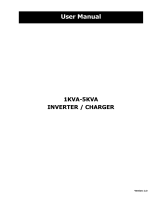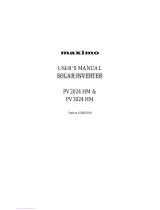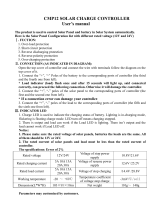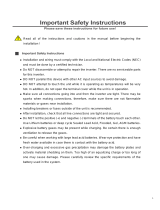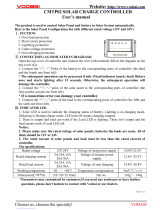
Table Of Contents
ABOUT THIS MANUAL ..................................................................................................................................... 1
Purpose ............................................................................................................................................................ 1
Scope ............................................................................................................................................................... 1
SAFETY INSTRUCTIONS .................................................................................................................................. 1
INTRODUCTION ............................................................................................................................................... 2
Features ........................................................................................................................................................... 2
Basic System Architecture ............................................................................................................................... 2
Product Overview ............................................................................................................................................. 3
INSTALLATION ................................................................................................................................................. 4
Unpacking and Inspection................................................................................................................................ 4
Preparation ...................................................................................................................................................... 4
Mounting the Unit ............................................................................................................................................. 4
Battery Connection .......................................................................................................................................... 5
AC Input/Output Connection ............................................................................................................................ 7
PV Connection ................................................................................................................................................. 8
Final Assembly ................................................................................................................................................. 9
Communication Connection ........................................................................................................................... 10
Dry Contact Signal ......................................................................................................................................... 10
OPERATION ..................................................................................................................................................... 11
Power ON/OFF .............................................................................................................................................. 11
Operation and Display Panel ......................................................................................................................... 11
LCD Display Icons ......................................................................................................................................... 12
LCD Setting .................................................................................................................................................... 14
Display Setting ............................................................................................................................................... 21
Operating Mode Description .......................................................................................................................... 24
Fault Reference Code .................................................................................................................................... 25
Warning Indicator ........................................................................................................................................... 26
SPECIFICATIONS ........................................................................................................................................... 27
Table 1 Line Mode Specifications ................................................................................................................... 27
Table 2 Inverter Mode Specifications ............................................................................................................. 28
Table 3 Charge Mode Specifications .............................................................................................................. 29
Table 4 General Specifications ....................................................................................................................... 30
TROUBLE SHOOTING ..................................................................................................................................... 31
Appendix: Approximate Back-up Time Table ........................................................................................... 32























